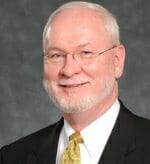
A presidential transition can be a fragile time for any campus; expectations are high and so is the stress level. Almost everyone wants the new president to be successful and create a new beginning for the institution. The transition process can be a minefield of challenges and opportunities, and a new president must navigate both of these carefully and strategically.
Several years ago, we co-authored a book, Presidential Transitions: It’s Not Just the Position, It’s the Transition (Praeger, 2008). In the process, we talked with scores of presidents about their own transitions, and they were surprisingly open to discussing the good, the bad and the ugly parts of their journey. We have continued these conversations with a whole new set of presidents, and once again, have learned a lot.
Many Presidencies Derail in their First 3 Years
In the continually changing world of higher education, what happens at the micro level when there is leadership transition in the campus presidency has a disproportionate impact. That is to say that the higher ed world is shifting and issues loom large, the pace is lightning fast, and the learning curve is steep. All too often, presidencies derail before they have barely begun.
Frequently, presidencies fail in the first three years – some even in the very first year – usually because of one or a combination of mistakes. For more information on this, see Trachtenberg, Kauvar, & Boque, Presidencies Derailed : Why University Presidents Fail and How to Prevent it (Johns Hopkins University Press, 2013).
It is critical for the president, the Board, and campus leaders to be aware of and ready to address some of the most common mistakes new presidents make in their first year. In this article, we will discuss one of the biggest of these mistakes.
REVIEW THE 10 COMMON MISTAKES OF NEW PRESIDENTS
If you find this information useful, we highly recommend that you attend our online training “10 Mistakes New Presidents Make.”
One Big Mistake: Creating a “Kitchen Cabinet”
A new president almost always inherits a senior team. Some teams are larger than others. Some presidents prefer a more intimate group with whom to conduct weekly business; others prefer a larger, more inclusive group. In either case, new presidents need to hear many voices and a range of viewpoints if they are to transition into the new institution effectively and lead that institution into the future — and the senior team is one of the most effective vehicles for helping the new president hear that range of views.
One of the stickiest problems we see is when a president forms an informal “Kitchen Cabinet,” which is a highly trusted, small group of leaders, usually a subset of the cabinet or senior team. The president feels “comfortable” with this set of advisors and solicits advice and emotional support, engages in strategic thinking with them, and uses them as a sounding board for ideas. This is all well-intentioned but can be devastating to the overall senior team or cabinet.
A Kitchen Cabinet creates the powerful dynamic of “insiders” and “outsiders” on the senior team, something you want to avoid. The ones who are “in” feel good about their close relationship with the president; the ones who are “out” will resent their exclusion deeply. They will wonder what happens inside the Kitchen Cabinet’s meetings and discussions and how decisions really get made. They will question whether they have any real influence and will spend a lot of time thinking about why they were not chosen to be on the inside.
This kind of small group completely destroys trust within the larger team.
We fully realize that the president can seek wise counsel from anywhere they see fit, but a new president needs to be conscious that the informal selection of a small, intimate group will cause problems with the larger team, and will limit the views and range of perspectives the president has access to. In the end, forming a Kitchen Cabinet detracts much more than it contributes.
Continue the Conversation
If you have advice for new campus leaders that you would like to share with AI’s subscribers through an article like this one, or through a webcast, please contact Amit Mrig, President of Academic Impressions, at amit@academicimpressions.com. Also, make sure to check out our recorded webcast “10 Mistakes New Presidents Make.”
MORE RESOURCES FOR COLLEGE & UNIVERSITY PRESIDENTS
Dear Small College President
The Skills Higher-Ed Leaders Need to Succeed
Fundraising for Presidents, Deans, and Boards
Presidents’ Advice for Campus Leaders in a Crisis
6 Things Presidents and Chancellors MUST Do to Prepare for a Crisis


